Learn how to make silky, smooth custard-style ice cream with this fool proof guide. Avoid curdling, master tempering, and get perfect texture every time!
If you’re ready to take your homemade ice cream up a notch, custard-style is where the magic happens. It’s rich, silky, and delivers that smooth texture and depth of flavour that just can’t be matched by simpler bases.
Making it, though? That’s where a lot of home cooks hesitate. If you’ve ever worried about cooking eggs, tempering milk, or curdling the whole thing, you’re not alone.
These are common hesitations for home cooks, and this guide is designed to walk you through it, step by step, without the fuss.
With the right method (and a little confidence), it’s much more straightforward than it seems. Once you get the hang of it — low heat, steady stirring, and knowing when to stop — you’ll never look back. And the results? Totally worth it.
✅ In This Article:
- What custard-style ice cream actually is (and how it differs from Philly-style)
- How to temper eggs without scrambling them
- The key signs your custard is perfectly cooked
- What to do if it starts to curdle
- A flexible custard base recipe + variations
- How to store custard-style ice cream
- FAQs + final tips for silky smooth success
What is Custard-Style Ice Cream?
Custard-style (also called “French-style”) ice cream is made with an egg yolk–based custard, gently cooked on the stovetop before chilling and churning. The yolks thicken the mixture and give the final product a rich, scoopable texture that’s noticeably creamier than Philadelphia-style (eggless) ice cream.
The main ingredients?

- Whole milk
- Double cream
- Egg yolks
- Sugar
- Optional flavourings (like vanilla, chocolate, spices, infusions)
Philly-style (short for Philadelphia-style) is quicker to make because it skips the eggs entirely — it’s simply cream, milk, sugar, and flavourings, no cooking required.
That means it’s great for quick batches or those avoiding eggs, and it still produces a light, refreshing scoop. But it doesn’t have the same velvety depth or “melt-in-the-mouth” feel that custard-style offers — especially when it comes to more indulgent flavours like chocolate or coffee.
👉🏽 To learn more about Philly-style ice cream, head over to our article – Eggs Or No Eggs? Choosing Between Custard & Philly-Style Ice Cream
Why Make Custard Ice Cream?
If you’ve only ever made quick no-churn or Philly-style ice creams, custard might just be your next big leap. Why? Because it creates that full-bodied, scooping texture that’s hard to beat.
🔹 Texture: It’s ultra-creamy, with a dense mouthfeel and great scoopability.
🔹 Flavour: Egg yolks carry flavour beautifully — your vanilla will taste deeper, chocolate richer, and add-ins more balanced.
🔹 Structure: Custard bases hold their shape longer when scooped and melt more evenly.
Ingredients & Ratios – The Custard-Style Formula
The following table provides your base ratio guide for making a classic custard ice cream, easily adaptable for any flavour.
| Ingredient | Amount | Notes |
|---|---|---|
| Whole Milk | 500ml | Adds lightness and helps blend the fat content |
| Double Cream | 250ml | High-fat content for smoothness (UK alternative to “heavy cream”) |
| Egg Yolks | 6 large | Thickens and emulsifies the base |
| Caster Sugar | 150g | Adjust to taste depending on add-ins |
| Vanilla | 1 tsp extract or ½ vanilla pod | Optional, or swap for your preferred flavour |
💡 Did You Know?
Egg yolks don’t just thicken — they emulsify fat and water, creating the smooth, creamy mouthfeel that custard-style is known for.
Making Custard Ice Cream (Without Curdling)
This is where the technique matters — and once you get it, it’s simple and repeatable.
Here’s how to do it with confidence;
1️⃣ Heat the Milk + Cream: Warm gently in a heavy-based pan until steaming (but not boiling). Add your vanilla if using a pod.
2️⃣ Whisk Egg Yolks + Sugar: In a separate bowl, whisk until the mixture turns pale and fluffy.
3️⃣ Tempering Eggs — The Gentle Way
This step tends to intimidate beginners, but it’s simpler than it sounds — and once you’ve done it once, you’ll feel far more confident.
Tempering means gradually warming the eggs so they don’t scramble. You do this by whisking warm (but not boiling) milk or cream into the yolks in a slow, steady stream — just enough to gently raise their temperature.
Once tempered, the egg mixture can safely be returned to the saucepan for thickening — no scrambled eggs in sight.
💡 Confidence Tip:
Take your time. Use a ladle to add the warm milk mixture little by little, whisking continuously. You’ll start to feel when the eggs are warming without cooking. Trust the process — it’s the key to that luscious, custard-style texture.
4️⃣ Cook Until It Thickens
Return everything to the pan over low heat. Stir constantly with a wooden spoon or silicone spatula.
 Look for:
Look for:
✔ A coating on the back of a spoon
✔ A clean line drawn through it with your finger
✔ (Optional: use a thermometer — 76–82°C / 170–180°F)
⚠️ Don’t let it boil! That’s when curdling kicks in.
❗ What To Do If It Starts To Curdle
💡 Oh no — it’s splitting! What now?
Don’t panic. If you see signs of curdling:
• Remove from heat immediately
• Pour into a blender and blitz until smooth
• Strain through a fine sieveThis won’t always fix a badly scrambled batch, but it can rescue minor curdling and still give you a usable base.
If it smooths out well and still tastes good, you can go ahead and churn it. The texture might be slightly less silky than perfect batches — but still totally scoop-worthy.
5️⃣ Strain and Chill
Strain the custard through a fine mesh sieve into a clean bowl to remove any stray bits of egg or pod.
Chilling Your Custard:
For the best results, chill your custard for at least 4 hours in the fridge before churning. An overnight chill can actually improve the texture, giving you a creamier, silkier ice cream because the mixture is thoroughly cooled and the flavours have more time to meld. Just make sure it’s covered tightly to avoid any fridge aromas sneaking in!
❄️ Churning & Storage
Once the custard has fully chilled (4–12 hours), churn in your ice cream maker per the instructions. It will turn into a rich, soft-serve consistency.
Transfer to a pre-chilled container, smooth the top, and freeze for at least 4 hours.
💡 Did You Know?
Ice cream often improves in texture after 24 hours — flavours meld, and becomes more scoopable.
No Ice Cream Maker? No Problem.
You can still enjoy custard-style ice cream with a no-churn method:
- After chilling your custard base, pour it into a shallow freezer-safe dish.
- Freeze for 45–60 minutes.
- Stir vigorously with a fork or whisk to break up ice crystals.
- Repeat every 30 minutes until smooth and scoopable (3–4 hours total).
Not quite the same as machine-churned — but still deliciously creamy.
An Easy Classic Vanilla Bean Custard Ice Cream Starter Recipe
Now that you’ve got the method down, here’s a simple starter recipe to practise with — rich, scoopable, and easy to customise with your favourite flavours.
 Ingredients
Ingredients
- 500ml whole milk
- 250ml double cream
- 6 egg yolks
- 150g caster sugar
- 1 vanilla bean pod (or 1.5 tsp good extract)
- Pinch of salt
Method
- Heat milk + cream + vanilla in a saucepan
- Whisk yolks + sugar separately
- Temper yolks with warm milk
- Return to the pan and cook over low heat until thickened
- Strain, chill 4–12 hrs
- Churn, freeze, enjoy
Serving Suggestion:
Keep it classic — or try out different ways to dress it up with toppings, swirls, or a creative twist. Pair with stewed fruit or an espresso drizzle for an affogato-style twist.
Flavour Variations
Now you’ve mastered the custard base, now you can adapt it to your hearts content. There are endless flavour variations to try.
Here are just a few ideas:
- Vanilla Bean: Steep the pod in the milk, remove before tempering.
- Salted Caramel: Replace 75g sugar with 100g homemade caramel.
- Lavender Honey: Infuse milk with dried lavender, and replace half the sugar with honey.
- Dark Chocolate: Add 150g chopped chocolate once the custard is cooked — whisk until smooth.
Can You Make Custard Ice Cream Dairy-Free?
Yes — with some adaptations. Egg yolks can be used to stabilise non-dairy milks too, but you’ll need to add fat (like coconut cream or nut butter) for creaminess.
Try this ratio:
- 400ml oat or almond milk
- 150ml coconut cream
- 5 egg yolks
- 100g sugar
- 1 tbsp cashew butter (optional, for richness)
Troubleshooting – Common Mistakes
| Problem | Cause | Fix |
|---|---|---|
| Scrambled Eggs | Too much heat, no tempering | Remove from heat, blend smooth, strain |
| Too Thin | Not cooked enough, too few yolks | Return to heat, cook gently until thicker |
| Lumpy Texture | No straining, sudden cooling | Strain before chilling, cool gradually |
| Icy Finish | Too little fat or over-churning | Use full-fat ingredients, don’t over-churn |
🍨 What’s Your Signature Scoop?
Have you tried making custard-style ice cream before? Do you have a go-to flavour or technique that always works for you — or are you just getting started on your frozen dessert journey?
💬 Share your experience in the comments below, or tag us on social media with #frostedfusions to show off your homemade creations!
The Final Scoop
Custard-style ice cream takes a bit more time, but the payoff is incredible texture and flavour. Once you’ve made one batch, you’ll feel more confident – slow heat, steady whisk, gentle chill — and soon you’ll be whipping up flavours from pistachio to passionfruit with confidence.
Don’t fear the eggs — master them! And if your first batch scrambles? Don’t worry, we’ve all been there. Try again. Your next scoop might just be your best yet.
 We hope that you have enjoyed our article – How To Make Custard-Style Ice Cream Silky, Smooth & Fool Proof – and that we’ve inspired you to give this rich, silky-smooth recipe a try.
We hope that you have enjoyed our article – How To Make Custard-Style Ice Cream Silky, Smooth & Fool Proof – and that we’ve inspired you to give this rich, silky-smooth recipe a try.
Whether it’s your first time tempering eggs or you’re refining your technique, we’re here to help make the process feel approachable and rewarding. If you have any questions, please drop us a comment below — we’ll be happy to get back to you.
Stay connected for more homemade ice cream inspiration! Share your ice cream creations with us on social media, and connect with a community of fellow frozen treat enthusiasts. Join us for mouthwatering recipes, expert tips, and exclusive updates. Follow us on Pinterest, Instagram, Facebook, and X by clicking on any of the social media icons below.
Disclosure: This post contains affiliate links. If you click on these links and make a purchase, we may earn a small commission at no additional cost to you. This helps support our website and allows us to continue creating content. Thank you for your support!














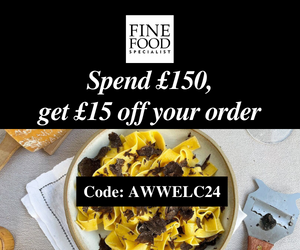
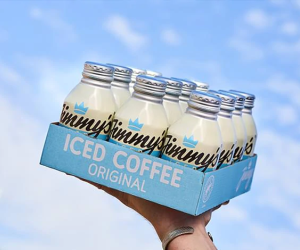

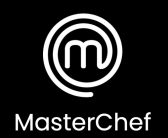









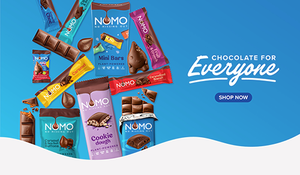






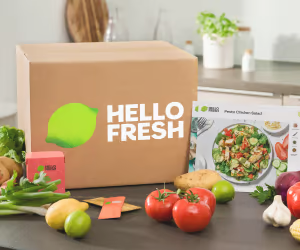


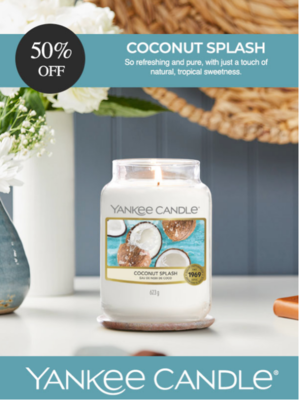





The guide does an excellent job of breaking down a seemingly complex process (making a custard base with eggs) into simple, manageable steps. The analogy of “tempering” as “bringing the eggs up to temperature” is particularly helpful for beginners.
For the chilling step, is there a recommended duration for the custard to be in the refrigerator before churning for optimal results? Does chilling it for an extended period (e.g., overnight) improve the final texture?
Hi Seth,
Thanks for dropping by again and for your comment. I’m glad the step-by-step guide and the “tempering” analogy were helpful.
Regarding chilling: for optimal results, I recommend letting your custard chill in the fridge for at least 4 hours before churning. If you have the time, overnight chilling can actually enhance the texture even further, giving you an extra creamy and silky finish — plus the flavours get a little more chance to develop.
I think I’ll add this detail to the guide so future readers can make the most of their custard base. Thanks again for your excellent question and helping the community.
Wishing you all the best,
Cherie
This is such an incredibly helpful guide—thank you! You’ve broken down the custard-style process into manageable, beginner-friendly steps. I especially loved how you described tempering eggs as “bringing them up to temperature”—that analogy makes a tricky technique feel totally achievable. I do have a couple of questions from a home cook’s perspective:
Churning timing: You recommend chilling the custard for 4 hours before churning and note that overnight chilling improves texture. Have you ever experimented with how long is too long? Does chilling past 24 hours start to affect the consistency or flavor?
Flavor infusions: I love the creative flavor variations you suggest—but do you have a favorite base you’d recommend for adding delicate or subtle flavors (like herbs or citrus) without overpowering the custard or risking curdling?
Thanks again for the clarity and confidence you bring to custard-making—your post makes me want to pull out my ice cream maker tonight!
Hi Leahrae,
Nice to see you and thank you so for yet another great comment.
I’m so glad to hear the guide made the custard-style process feel approachable — that “bringing eggs up to temperature” analogy really helps demystify tempering, doesn’t it?
For chilling, you’re right that 4 hours is the minimum I recommend, and overnight usually gives the best texture. I’ve experimented with longer chilling, and generally up to 24 hours is safe — the custard can actually benefit from a bit of extra time in the fridge as it allows the flavours to meld beautifully.
Beyond 24–36 hours, though, I’d say the texture may start to lose a touch of creaminess, and in very rare cases, delicate flavours can dull slightly. So for the best scoopable results, overnight to about 24 hours is ideal.
For subtle infusions, I love starting with a classic vanilla custard base and adding delicate herbs like lavender, basil, or thyme, or zesty citrus like lemon or orange – which won’t overpower or risk curdling the eggs. The trick is to infuse the milk/cream gently over low heat and strain thoroughly before combining with the eggs — that way you get all the flavour without any texture issues.
I hope this helps — and I’m so glad that you’re inspired to fire up your ice cream maker!
I’d love to hear which flavour you end up experimenting with first.
Wishing you all the very best,
Cherie